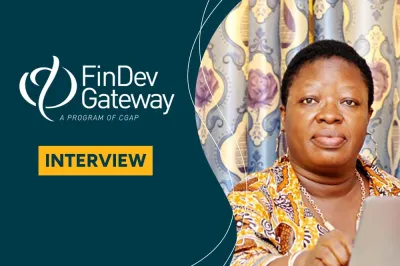Closing the “Blockchain for Development” Evidence Gap

This post is part of the FinDev Gateway blog series, Blockchain in Development, which explores the potential and limitations of blockchain for financial inclusion and development.
Growing interest in whether and how blockchain technology can help address a variety of social and economic challenges has given rise to a community of thinkers, innovators, and policymakers working to examine the technology’s implications for social impact and development.
On one level, things are happening quickly in this space. Over the last two years, many large development organizations have begun to explore using the technology, including the World Bank, which established a Blockchain Lab last year; the United Nations, which has 15 agencies pursuing blockchain initiatives; the Inter-American Development Bank, which is testing the use of blockchain as a platform for asset registries; and USAID, which published a primer on the topic in April. Despite these advances, however, the number of pilot projects underway remains quite small, reflecting hurdles to implementation that have received insufficient attention to date.
Given that blockchain technology is still in an early stage of development, it makes sense that most discussions about its use have focused on its potential rather than obstacles. Too often, however, boosters of the technology have overstated its capabilities and failed to consider hurdles to adoption. This imbalance has led to unrealistic expectations about what blockchain solutions can do, how easy they will be to implement, and how quickly they can scale, if at all. The result has been a widening gap between expectations and reality that has naturally led to skepticism.
Understandable excitement leads to unrealistic expectations
Enthusiasm over the potential of “blockchain for development” is largely based on the notion that it allows for trustless collaboration. This widely held view is captured in a report co-published by the United Nations Development Programme (UNDP) and the company Blockchain, which states that “the decentralized, transparent, verifiable nature of [blockchain] means we can trust people and organizations precisely because trust is no longer an issue.”
But this belief is misguided. Although the original blockchain created by Satoshi Nakamoto removed the need to rely on trusted intermediaries to oversee the transaction of assets like bitcoin that exist solely in the digital realm, it cannot play the same role when the things we want to track exist in the physical “off-chain” world. As Stephen Wilson of Constellation Research notes, “blockchain does just one thing: it establishes the order of entries in a distributed ledger, so as to prevent double spend without an umpire. The truth of the contents of the ledger is an entirely different matter.” For example, creating a blockchain-based land registry does nothing to remove the need to trust the bureaucrats who upload land titles. At best, the technology can enhance trust in some relationships by increasing the transparency and immutability of transactions and records.
These potential benefits must be weighed against the cost of complexity that moving from a centralized to a decentralized solution necessarily entails. Shifting from a system in which a single actor verifies who owns what to one in which many actors share this responsibility raises a number of thorny issues related to governance, data privacy, and operational resiliency that need to be resolved before blockchain solutions can scale. It also requires the use of a consensus protocol, even the most efficient of which adds delay.
Whether the benefits of decentralized governance models exceed the costs generated by their increased complexity ultimately depends on the use case in question. In recent years, a variety of decision models have been created to help guide the process of balancing these tradeoffs (a recent iteration produced by the U.S. Department of Homeland Security is presented below). In general, these models suggest that in the clear majority of cases organizations are better off using simpler (i.e., centralized) databases.

A Data-Driven Path Forward
The onus is therefore on blockchain start-ups to make the case that the solutions they offer provide significant advantages over existing approaches. However, their efforts to do so will be hampered by an absence of quality data: to date, the start-ups in this space have been quick to publicize their pilot project “successes,” but have often failed to provide metrics in support of their claims.
The development organizations mentioned above are well-positioned to help close the evidence gap and accelerate the learning process. At a minimum, they should require the start-ups they collaborate with to have a monitoring and evaluation plan in place before a pilot project begins. Then, once a project has been completed, they should share the data collected and the lessons learned as broadly as possible, to allow the development community to determine the technology’s real potential efficiently.
*****
In his essay, “Uncertainty and Technological Change” economic historian Nathan Rosenberg emphasized that most major innovations enter the world in a primitive condition and go through a long process of technical improvement and change before reaching maturity. For that reason, even inventors often cannot foresee how their innovations will ultimately be used. Blockchain solutions are sure to evolve in a similar manner. By taking a communal and evidence-based approach whenever possible, development organizations can accelerate this trial-and-error process and learn more from it.
|
Read more from the FinDev Gateway Blog Series, Blockchain in Development:
|


